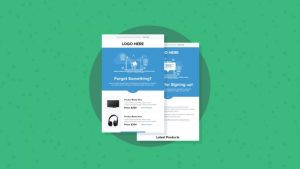AB testing is a fantastic tool. It enables you to monitor how alternative subject lines, CTA buttons, content, and delivery periods effect the engagement rates of your subscribers. A/B testing has long been a useful tool for learning about your consumers’ preferences and interaction patterns, but how can marketers use it in email campaigns? Let’s see what we can find out!
Subject lines
Due to the increased competitiveness of email marketing, which sometimes results in an overcrowded inbox, subject lines are critical to any email.
Numerous research have been conducted to determine the ideal length of topic lines, but no definitive result has been reached. The only thing that appears to be guaranteed is that subject lines should be very short (under 49 characters) or very long (up to 70 characters). Start by comparing shorter and longer subject lines to discover which your audience prefers; depending on the topic, you may also want to consider the time variable. A subject line like “Have a bad day?” sent around 4 p.m. on a Monday will almost certainly be a hit!
If you think your brand is too formal, surprise your customers by running an A/B test with a more relaxed approach. You can still put the vital information into these informal subject lines to be relevant, but being a little unorthodox can really assist attract the attention of your readers.
Your Email Content
Will your subscribers read the rest of the story if you’ve nailed the illusive opening? While you could be tempted to go fancy with your emails by employing eye-catching designs, a simpler email may prove to be the best alternative.
Virtually all other types of content perform worse than photos and videos. Your customers’ experience will be harmed if their email client disables photos by default, as Gmail frequently does, thus A/B testing is essential. It’s also a good idea to see how your email performs on multiple platforms, as mobile devices account for about 53% of all email opens. Why send an email if your recipients can’t read it?
Call to Action
So they’ve read your email, and now we’re curious if the CTA will entice them to click. Despite the fact that best practices recommend having only one obvious CTA button, having many ones may yield greater results. The word “free” in subject lines and CTA buttons is occasionally prohibited by spam filters, thus your language might be your demise. Instead, use a more friendly phrase like “free,” “on the house,” or “as a gift.”
Timing is Everything
When it comes to email, the time you send it can mean the difference between being discarded and gaining a customer. If you’re a B2B company, you might get more attention if you send an email during business hours, whereas a retail company might get more attention if you send it on weekends. It is dependent on your clients and their daily schedules, therefore test your campaign on weekdays vs. weekends to see which produces the best results. The same criteria apply to the time of day; some may advise you to send your email early in the morning because most people check their emails first thing in the morning, while others may advise you to send it later in the evening or night, especially if your readers are glued to their mobile devices. To make this procedure easier, try segmenting your consumers or using an advanced timing control to manage different time zones if you’re an international company.
Will your subscribers unsubscribe if you send them emails every day? Will they become disconnected if you just communicate with them once a week? Rather than adhering to a frequency you think will work, segment your list and test open, click-through, and unsubscribe rates to find which email frequency is most effective for your business.
Conclusion
Use our four steps of A/B testing one at a time to compare your campaigns and analyze your subscribers’ behavior. You’ll learn which subject lines, links, content, and delivery times are the most popular in your campaigns. Analyzing your campaigns is essential for enhancing your client experience and, as a result, increasing your return on investment. To take it a step further, look at the location and performance of the links used in each combination, and if your campaigns all utilize the same links, figure out which ones got the most hits to find the optimal campaign design for future mailings. Never stop testing, and never rely on a hypothesis or best practices when you can do your own A/B tests and discover the truth!







